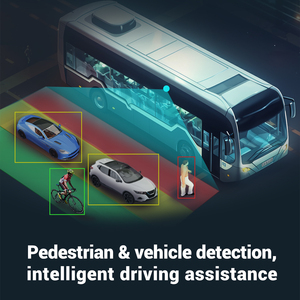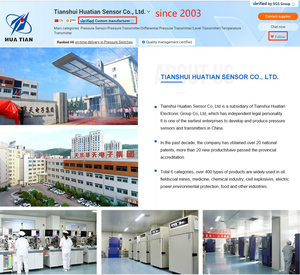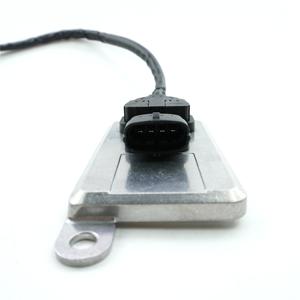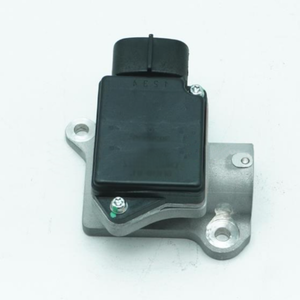
All categories
Featured selections
Trade Assurance
Buyer Central
Help Center
Get the app
Become a supplier

(4577 products available)







































Engine sensors are critical components in any vehicle, including buses. They monitor and report conditions within and around the engine to ensure optimal performance and emissions control. While there are numerous sensors in a bus engine, here are some common types:
The specification of any given sensor is determined by the type and function of the sensor in the engine.
Bus Engine Oil Pressure Sensor
It is specified by the pressure range it can read, accuracy, and the operating environment.
• Pressure Range: The bus engine oil pressure sensor has to read the pressure range from 0 to 100 psi.
• Accuracy: The sensor has to accurately read the oil pressure with an error margin of 5 percent.
• Operating Environment: The sensors have to work in high temperatures, up to 250 degrees Fahrenheit, and in very wet environments.
Bus Engine Coolant Temperature Sensor
Its specifications include the temperature range it can read, response time, and mounting style.
• Temperature Range: The bus engine coolant temperature sensor has to read a temperature range from -40 to 300 degrees Celsius.
• Response Time: The sensor must have a fast response time so that it could read temperature changes within 5 seconds.
• Mounting Style: The sensor has to be mounted with a screw-in style on the engine block.
Bus Air-Fuel Ratio Sensor
Its specifications include the ratio range it can read, durability, and electrical connection type.
• Ratio Range: The bus air-fuel ratio sensor has to read a range from 12:1 to 15:1, which indicates a rich to lean mixture.
• Durability: The sensor has to be a long-life WITNESS sensor that could last up to 100,000 miles in harsh conditions such as high temperatures and vibrations.
• Electrical Connection: The sensor has to connect with a sealed 4-pin connector to prevent moisture and dust entry.
Bus Engine Knock Sensor
Its specifications include the frequency range it can detect, sensitivity, and mounting location.
• Frequency Range: The bus engine knock sensor has to detect a frequency range from 5 to 10 kHz, which corresponds to knock vibrations.
• Sensitivity: It has to have a sensitivity level that enables it to detect knock signals with an amplitude of 10 mV.
• Mounting Location: The sensor has to be mounted on the engine block in a specified location to detect knock in all cylinders.
Maintenance of bus engine sensors is crucial to ensure they function correctly and to prolong their lifespan. Here are some general tips on maintaining bus engine sensors:
By following these maintenance tips, the bus engine sensors can provide reliable and accurate data, optimizing engine performance, fuel efficiency, and emissions control.
Choosing the right engine sensor for a bus is critical for ensuring effective and reliable engine management. There's no one-size-fits-all approach to choosing a bus engine sensor. Here are some factors to consider when choosing a proper engine sensor for a bus;
The bus's make, model, and year of production
Different buses have different engines. When selecting a sensor, it's important to consider the bus's make, model, and year of production. This ensures compatibility of the sensor with the bus's engine control system.
Consider the engine control system
Consider the type of engine control system used by the bus. This is because different buses use different Engine control systems. Look for engine sensors that are specifically designed for bus engines with common rail diesel technology. This ensures accurate data transmission and processing.
Consult the user manual
Consulting the user manual is important because the manual provides valuable information about the recommended engine sensors for the specific bus engine. The manual also provides information about the sensor's location, installation procedures, and maintenance requirements.
Professional Mechanic advice
Professional mechanics have vast experience dealing with different bus engine sensors. They can recommend reliable and compatible engine sensors for the bus. They can also inspect the bus engine and identify any existing problems that may require specific sensors to be replaced.
Price and warranty
When selecting bus engine sensors, it's important to consider price and warranty. Set a budget for the engine sensors. Compare the prices from different suppliers and manufacturers. Go for engine sensors that offer good value for money. Don't forget to check the warranty period offered by the manufacturers. A good warranty period is a sign of quality and durability.
Replacing an engine sensor on a bus can be a straightforward process. The bus timetables will have to be checked to ensure that the bus is not on a busy schedule. The following steps should be taken to ensure that the process is smooth.
Have the Right Tools
Users should ensure that they have all the tools needed to replace a bus engine sensor. This includes screwdrivers, pliers, and a socket set. They should also have the new engine sensor that is a perfect fit for the old one.
Find the Right Location
Users should consult the bus's engine manual to find out where the old engine sensor is located. They should also inform a mechanic so they can guide them just in case they are not sure where to look.
Turn Off the Bus
Make sure the bus is turned off and the keys are removed from the ignition. This will prevent any accidents from happening.
Remove the Old Sensor
Users should use the right tools to loosen any bolts or screws holding the old sensor in place. When it is loose, they should carefully pull it out.
Install the New Sensor
The new sensor bus part should be carefully placed in the same spot as the old one. Sensors that are screwed in should be tightened gently to avoid breaking the screws.
Reconnect Any Wires
If there are any wires disconnected from the old sensor, they should be reconnected to the new one. They should ensure they follow the same order as shown in the manual.
Test the Bus
Before driving, users should start the bus to ensure the new sensor is working. They should pay attention to any unusual sounds and inspect the area for leaks. If anything seems wrong, they should double-check their work or consult a professional mechanic.
Q1: What is a bus engine sensor?
A1: A bus engine sensor is a component on the bus that detects changes and converts them into electronic signals. They monitor various aspects of the bus's operation, such as the bus's speed, temperature, and pressure, to ensure optimal performance and emissions control. Engine sensors are vital for the proper functioning of the bus's engine and emissions control system.
Q2: How does a bus engine sensor work?
A2: Engine sensors on a bus monitor and measure various parameters related to engine performance and emissions control. They detect changes in their respective parameters and convert them into electronic signals. These signals are sent to the engine control unit (ECU), which processes the information and adjusts engine operation accordingly to optimize performance, fuel efficiency, and emissions control. Bus engine sensors play a crucial role in ensuring the bus's engine runs efficiently and meets emissions standards.
Q3: Where are engine sensors located on the bus?
A3: Bus engine sensors are generally located on the bus engine. For instance, the bus's crankshaft position sensor is located near the crankshaft. At the same time, the bus's camshaft position sensor is located on the camshaft. Similarly, the bus's throttle position sensor is found on the bus's accelerator pedal assembly. In short, bus engine sensors are strategically located on the bus to monitor and measure various parameters related to engine performance and emissions control.
Q4: What do engine sensors do?
A4: Engine sensors play a vital role in ensuring the bus's engine runs efficiently and meets emissions standards. They monitor and measure various parameters related to engine performance and emissions control. Then, they detect changes in their respective parameters and convert them into electronic signals. These signals are sent to the engine control unit (ECU), which processes the information and adjusts engine operation accordingly to optimize performance, fuel efficiency, and emissions control. In short, engine sensors on a bus monitor and measure various parameters related to engine performance and emissions control.
Q5: What are the common signs of a faulty bus engine sensor?
The common signs of a faulty bus engine sensor include the following: